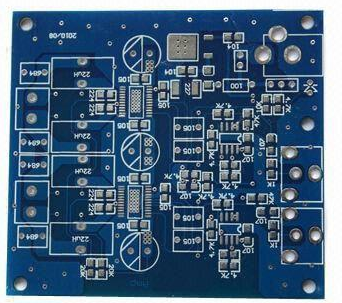SMT patch processing is one of the most popular skills and processes in the electronics assembly industry. As electronic products are becoming smaller and smaller, the weight is getting lighter and lighter, but the function requirements are getting stronger and stronger. SMT process flow It has also become more and more messy.
SMT process can be divided into single-sided assembly, double-sided assembly, single-sided mixed assembly and double-sided mixed assembly according to the assembly method.
(1) Single-sided assembly process: As long as the surface is mounted on one side. The process is as follows:
Printing solder paste => Mounting components => Reflow soldering
(2) Double-sided assembly process: As long as the two-sided installation of surface mount. The process is as follows:
B-side printed solder paste=>B-side mounted components=>B-side reflow soldering=>turnover=>A-side printed solder paste=>A-side mounted components=>A-side reflow soldering

(3) Single-sided mixed assembly process: THC is on the A side, and the chip component SMC is on the B side. There are generally two single-sided mixed assembly processes: the first paste method and the later paste method. The former has low PCB cost and simple process; the latter has a messy process.
First paste method: B surface dispensing => B surface mount components => B surface glue curing => flaps => A surface plug-in components => B surface wave soldering
Post-attachment method: A side inserting components => flaps => B side dispensing => B side mounting components => B side glue curing => B side wave soldering
(4) Double-sided mixed assembly process: The double-sided process is rather messy, and THC, SMC/SMD may be single-sided or double-sided.
Process 1: Print solder paste on side A => mount components on side A => insert components on side A => wave solder on side B
Step 2: Print solder paste on side A => mount components on side A => reflow soldering on side A => flaps => dispensing on side B => mount components on side B => glue curing on side B => flaps =>A side plug-in components=>B side wave soldering
Process 3: Dispensing on side A => mounting components on side A => curing of A glue => flipping board => printing solder paste on side B => mounting components on side B => inserting components on side B => reflow Soldering => Flip board => A side plug-in components => B side wave soldering
The SMT patch processing process seems very messy, single-sided assembly, double-sided assembly and single-sided mixed assembly are good to understand, double-sided mixed assembly is difficult, in fact, it is not messy to classify it. Double-sided mixed assembly process 1 is very simple, process 2 is the most commonly used, and the method is the most reliable, process 3 is generally rarely used, and the B-side components are required to withstand secondary welding.
According to practical production experience, reflow soldering is generally used for those without THC components; the two reflow soldering are generally B side reflow soldering; both reflow soldering and wave soldering are reflow soldering and then wave soldering, and the wave soldering is generally B noodle.
SMT processing knowledge of placement machine development and control
Mounting is a very important process in the processing of SMT placement machines. SMT placement machines will naturally be highly valued by manufacturers and customers, but many people may not understand the development and control of SMT placement machines. Let's share these basic knowledge with you below.
1. Development of placement machine
Among SMT assembly equipment, the placement machine is the most messy system. Concentrated by the integration of many aspects of skills such as automatic control, mechatronics skills, optical measurement skills, computer-aided design and production CAD/CAM. The development of the placement machine completely follows the development of the electronic component packaging situation, the development of electronic products, and the development of the electronic product manufacturing industry.
Its development and changes are mainly manifested in the following points:
1. The size of surface mount components SMC is getting smaller and smaller; the distance between IC pins is getting smaller and smaller; the assembly density of PCBA is getting larger and larger;
2. There are more and more types of electronic components on PCBA; assembly control accuracy requirements are getting higher and higher; production speed requirements are getting faster and faster;
3. The changes in process skills have led to such things as: stacking (PoP) assembly, flexible printed circuit board FPCB assembly (COF), three-dimensional multi-chip assembly 3D-MCM, on-board chip COB, etc.
Two, placement machine classification
1. Semi-automatic placement machine: used in the laboratory for trial production of small batch SMT products
2. Medium-speed placement machine: often used in small and medium batch production enterprises
3. High-speed placement machine: used for large-scale, small-type large-scale enterprises
4. Multi-function placement machine: it can be used for small batch and various types of production lines
5. Deploy with medium and high-speed machines to form a flexible production line
6. Special-shaped component placement machine: dedicated to the placement of special-shaped electronic components, such as high-frequency circuit shields, connectors, IC card sockets, etc.
The stability and accuracy of the SMT placement machine will directly affect the quality of the placement, and then affect the stability and accuracy of the final product operation. We have always attached great importance to the quality of SMT placement products and regard quality as the foundation of business development. Japan's JUKI placement machine was first introduced in the country. The smallest placement component reached 0.2mm*0.1mm. It can stack a dozen sesame-sized components without falling, from SMT placement to the most basic and most important. The placement process is guaranteed.